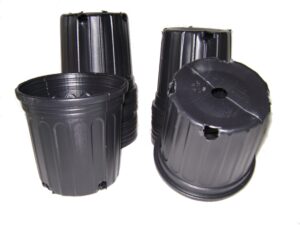
Rhubarb and Swiss chard are both popular vegetables used in cooking and gardening, but they are distinct plants with different characteristics, flavors, and culinary uses. In this article, we will explore the differences between rhubarb and Swiss chard, including their botanical characteristics, culinary applications, nutritional profiles, and growing practices.
I. Introduction to Rhubarb and Swiss Chard
Brief Overview of Rhubarb Rhubarb, scientifically known as Rheum rhabarbarum, is a perennial vegetable known for its tart stalks, which are commonly used in pies, jams, and desserts. It belongs to the Polygonaceae family and is native to Asia.
Introduction to Swiss Chard Swiss chard, botanically classified as Beta vulgaris subsp. cicla, is a leafy green vegetable that belongs to the same family as beets and spinach. It is prized for its colorful stems and large, tender leaves, which are versatile in culinary applications.
Clarifying the Differences Between Rhubarb and Swiss Chard While both rhubarb and Swiss chard are vegetables often found in gardens and kitchens, they are distinct plants with unique characteristics. Understanding these differences is essential for proper identification and utilization in cooking and gardening.
II. Botanical Characteristics
Rhubarb: Rheum rhabarbarum Rhubarb plants are characterized by their large, triangular-shaped leaves and thick, celery-like stalks. Common cultivars include ‘Victoria’ and ‘Crimson Red,’ which vary in color from green to deep red.
Description of Rhubarb’s Appearance and Growth Habit Rhubarb plants form large clumps of leaves that emerge from a central crown. The stalks can reach heights of up to 2 feet and are typically harvested for culinary use.
Common Cultivars of Rhubarb Popular cultivars of rhubarb include ‘Victoria,’ which produces bright red stalks with a tart flavor, and ‘Crimson Red,’ known for its deep red color and slightly sweeter taste.
Swiss Chard: Beta vulgaris subsp. cicla Swiss chard plants feature vibrant, colorful stems in shades of red, yellow, and orange, with large, glossy green leaves. Varieties such as ‘Bright Lights’ and ‘Rainbow’ offer a diverse array of stem colors.
Description of Swiss Chard’s Appearance and Growth Habit Swiss chard grows in rosettes of broad, crinkled leaves with long, thick stems. It can reach heights of up to 2 feet and is prized for its ornamental value as well as its culinary versatility.
Common Varieties of Swiss Chard Varieties of Swiss chard include ‘Bright Lights,’ which features stems in vibrant hues of red, yellow, and orange, and ‘Fordhook Giant,’ known for its large, tender leaves and mild flavor.
III. Culinary Uses and Flavor Profiles
Rhubarb in Cooking and Baking Rhubarb is commonly used in desserts such as pies, crisps, and tarts, where its tart flavor is complemented by sweeteners such as sugar or honey. It can also be stewed, poached, or used to make jams and preserves.
Traditional Uses of Rhubarb in Desserts, Jams, and Savory Dishes In addition to desserts, rhubarb can be used in savory dishes such as chutneys, sauces, and marinades, where its tartness adds depth of flavor and complexity.
Flavor Profile: Tartness with Sweet Undertones Rhubarb has a tart flavor with subtle sweet undertones, making it a versatile ingredient in both sweet and savory recipes. The stalks are firm and crisp when raw, softening to a tender texture when cooked.
Swiss Chard in Culinary Applications Swiss chard is prized for its mild, slightly earthy flavor and tender texture, making it suitable for a wide range of culinary applications. It can be eaten raw in salads, sautéed, steamed, or added to soups, stews, and casseroles.
Versatility of Swiss Chard in Salads, Stir-Fries, and Soups Swiss chard’s tender leaves and crunchy stems are versatile in the kitchen, adding color, texture, and nutrition to salads, stir-fries, and soups. It can also be blanched and used as a wrap for filling or stuffing.
Flavor Profile: Mild, slightly earthy flavor with a hint of sweetness Swiss chard has a mild flavor with a slightly earthy undertone and a hint of sweetness, making it a versatile addition to a variety of dishes. The stems are crunchy and juicy, while the leaves are tender and flavorful.
IV. Nutritional Value and Health Benefits
Rhubarb: Nutrient Profile and Potential Health Benefits Rhubarb is low in calories and high in fiber, vitamin K, and antioxidants such as anthocyanins and quercetin. It may help support digestive health, bone health, and heart health when consumed as part of a balanced diet.
High in Fiber, Vitamin K, and Antioxidants The high fiber content of rhubarb can help promote regularity and support digestive health, while vitamin K plays a role in blood clotting and bone metabolism. Antioxidants in rhubarb may help protect against oxidative stress and inflammation.
Potential Health Benefits: Digestive Health, Bone Health, and Heart Health The fiber in rhubarb can help promote digestive regularity and prevent constipation, while vitamin K is essential for bone health and may help reduce the risk of osteoporosis. Antioxidants in rhubarb may also help protect against heart disease by reducing inflammation and oxidative stress.
Swiss Chard: Nutrient Profile and Potential Health Benefits Swiss chard is rich in vitamins A, C, and K, as well as minerals such as iron and magnesium. It may help support eye health, immune function, and blood sugar regulation when included in a balanced diet.
Rich in Vitamins A, C, and K, as well as Iron and Magnesium Swiss chard is packed with vitamins and minerals that are essential for overall health and well-being. Vitamin A supports eye health and immune function, while vitamin C acts as an antioxidant and supports collagen production. Vitamin K is important for bone health and blood clotting, while iron and magnesium play roles in energy metabolism and muscle function.
Potential Health Benefits: Eye Health, Immune Support, and Blood Sugar Regulation The vitamins and minerals in Swiss chard may help support eye health, immune function, and blood sugar regulation. The antioxidants in Swiss chard may also help protect against oxidative stress and inflammation, reducing the risk of chronic diseases such as heart disease and cancer.
V. Growing and Harvesting Practices
Cultivation of Rhubarb Rhubarb is typically grown in cool climates with well-drained soil and full sun to partial shade. It is propagated by dividing crowns or planting crowns purchased from nurseries. Rhubarb stalks should be harvested by twisting or cutting them from the plant when they reach 10-15 inches in length.
Ideal Growing Conditions: Cool Climates, Well-Drained Soil Rhubarb thrives in cool, temperate climates with well-drained soil that is rich in organic matter. It prefers full sun to partial shade and benefits from regular watering during dry periods.
Propagation Methods and Harvesting Tips Rhubarb can be propagated by dividing established crowns in early spring or fall. Plant the divisions in well-prepared soil and water them thoroughly. Harvest rhubarb stalks when they are firm and fully grown, typically in spring or early summer.
Cultivation of Swiss Chard Swiss chard is well-suited to a wide range of growing conditions and can be grown in containers, raised beds, or traditional garden plots. It prefers full sun to partial shade and moist, well-drained soil. Swiss chard seeds can be sown directly in the garden or started indoors and transplanted outdoors after the last frost date.
Suitable Growing Conditions: Sun to Partial Shade, Moist, Well-Drained Soil Swiss chard is adaptable to various growing conditions but performs best in full sun to partial shade and soil that is consistently moist and well-drained. It can tolerate some drought but may bolt to seed in hot weather.
Planting and Harvesting Guidelines for Swiss Chard Plant Swiss chard seeds directly in the garden in early spring or fall, spacing them 6-12 inches apart in rows or clusters. Thin the seedlings as needed to allow room for growth. Harvest Swiss chard leaves by cutting them from the plant as needed, leaving the center leaves intact for continued growth.
Reviving a dying jade plant requires careful attention to its needs and proactive intervention to address underlying issues. By following these steps and providing the necessary care and support, you can help your jade plant bounce back to vibrant health.






